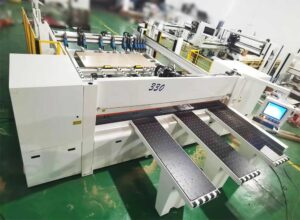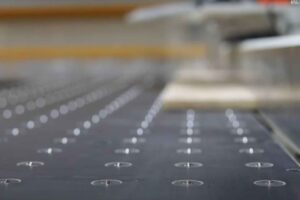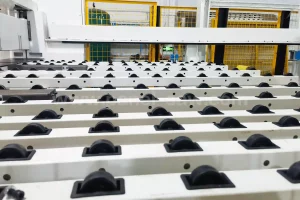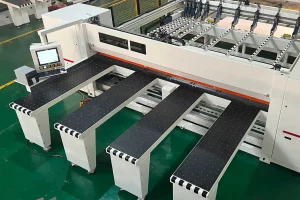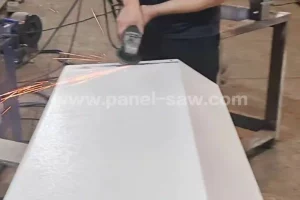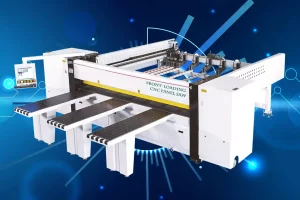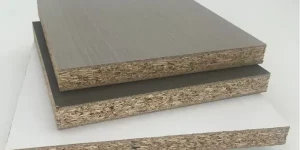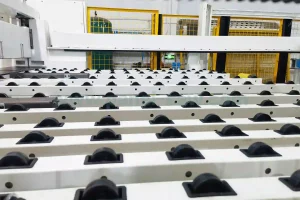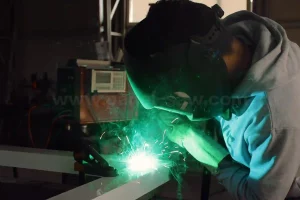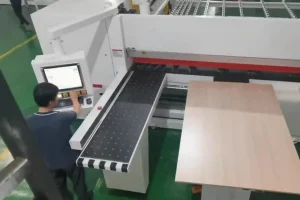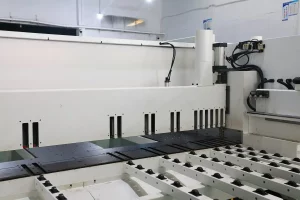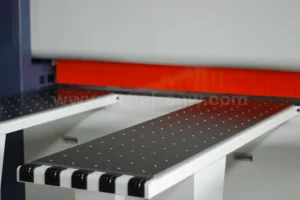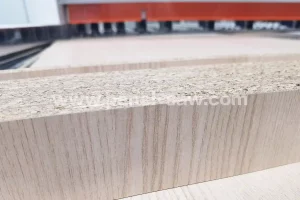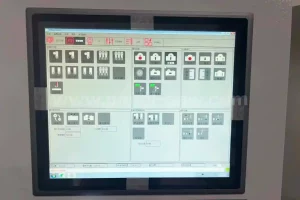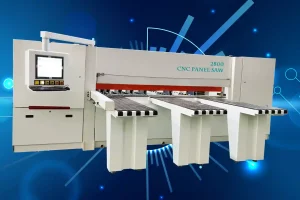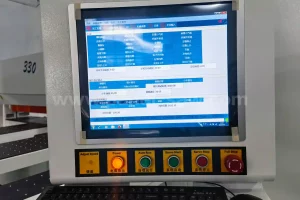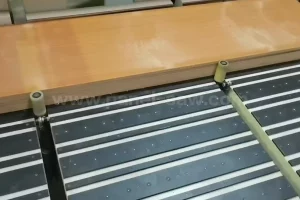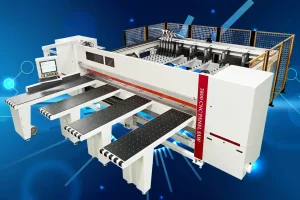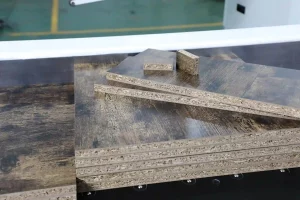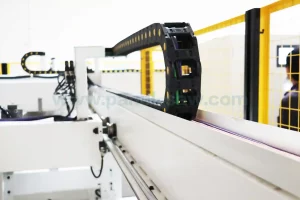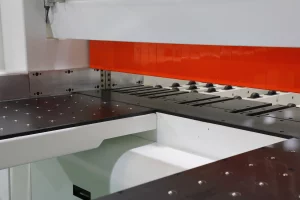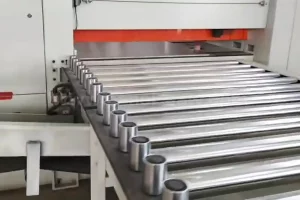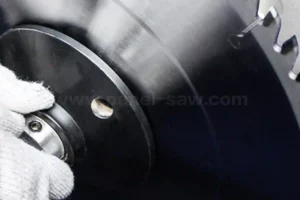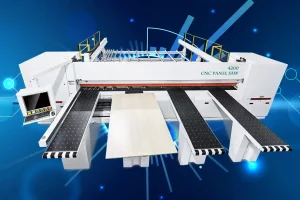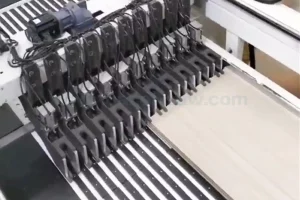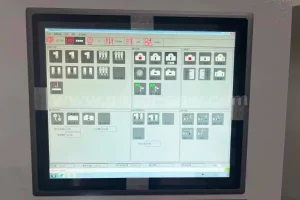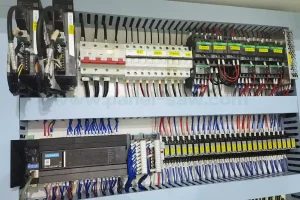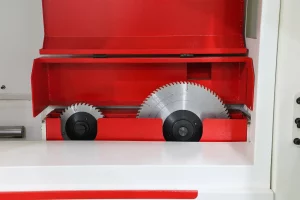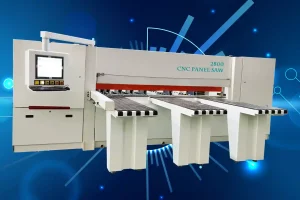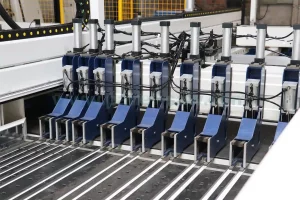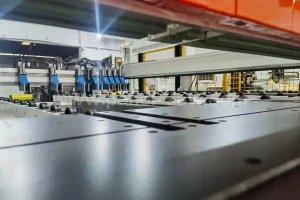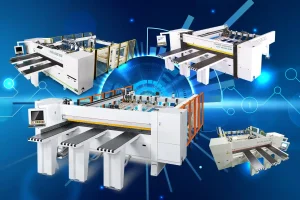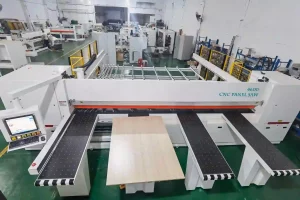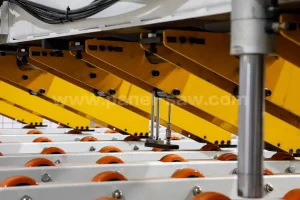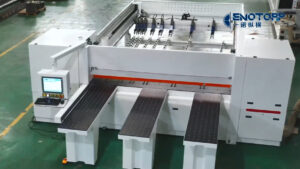
Selecting the Ideal Automatic Panel Saw for Your Woodworking Needs
Understanding Material Requirements for Automatic Panel Saws
The proliferation of automation in manufacturing and woodworking has led to the emergence of the automatic panel saw as a vital tool in industrial and commercial settings. These sophisticated machines offer increased efficiency, precision, and safety in cutting large sheets of material. However, navigating the diverse options available can be daunting.
When selecting an automatic panel saw, the primary criterion is the material being processed. Different materials require specific blade materials and cutting technologies. For example, solid wood demands different blades than plywood or composite materials. The thickness and density of the material also influence the saw’s power requirements and feed speed. Choosing the right blade for the material ensures smooth cuts and prolongs the life of both the blade and the machine.
In woodworking, the variety of materials can be vast. Solid wood, for instance, is dense and requires a robust blade capable of handling its natural hardness. On the other hand, plywood, which consists of multiple layers of veneer, demands a blade that can manage its layered structure without causing splintering. Composite materials, which often combine wood fibers with resins, require a blade that can handle the synthetic components without losing sharpness quickly.
The material’s thickness also plays a crucial role. Thicker materials require more powerful saws to ensure clean, precise cuts without bogging down the machine. Additionally, the feed speed must be adjusted according to the material’s density and thickness to prevent overheating and ensure a smooth cutting process. High-density materials typically require slower feed speeds to maintain accuracy and prevent blade wear.
In conclusion, understanding the material requirements is crucial when selecting an automatic panel saw. By choosing the correct blade and cutting technology for the specific material, you can ensure optimal performance and longevity of your saw, leading to improved efficiency and quality in your woodworking projects. Thoroughly evaluating the material properties and matching them with the saw’s capabilities is the first step toward achieving high-quality results.
Evaluating Cutting Requirements and Capabilities of Automatic Panel Saws
Another crucial aspect in choosing an automatic panel saw is understanding the cutting requirements. The type of cuts and the desired accuracy are vital. Straight cuts, angular cuts, and complex shapes each demand different saw configurations. The machine’s ability to handle multiple cuts without manual intervention is also important for continuous production.
Advanced automatic panel saws come with features that cater to a variety of cutting needs. For instance, some models are equipped with programmable settings for different types of cuts, allowing for quick adjustments and high precision. Ensuring that the saw can perform the necessary cuts efficiently will maximize productivity and reduce downtime.
Straight cuts are the most basic and are required for creating uniform panels, which are foundational in many woodworking projects. Angular cuts, which involve cutting materials at specific angles, are essential for more complex structures like frames and cabinetry. Complex shapes require the saw to have the capability to follow intricate patterns, which is crucial for custom furniture and decorative pieces.
High-end automatic panel saws are equipped with CNC (Computer Numerical Control) technology, which allows for precise and repeatable cuts based on pre-programmed designs. This technology is invaluable for workshops that need to produce large quantities of identical pieces with minimal variation. Additionally, these saws often feature automated material handling systems that move the panels into position, further reducing manual labor and increasing efficiency.
In conclusion, evaluating the cutting requirements and capabilities of an automatic panel saw is essential. By selecting a machine that meets your specific cutting needs, you can enhance productivity, maintain high precision, and streamline your production process. Understanding the specific cutting demands of your projects will help you choose a saw that can handle them with ease, ensuring consistent and high-quality results.
Assessing the Operating Environment for Automatic Panel Saws
The operating environment should also be factored in when choosing an automatic panel saw. The available space, dust extraction needs, and the need for integration with other automation systems are vital considerations. The saw’s safety features and operator interface should be intuitive and user-friendly. Advanced models often include features such as automatic material handling, collision avoidance sensors, and emergency stop buttons.
Considering the layout of your workshop or factory is important. Ensure that there is enough space for the saw to operate efficiently and safely. Effective dust extraction systems are also crucial for maintaining a clean and safe working environment. Additionally, integrating the automatic panel saw with other automation systems can further enhance productivity and workflow.
In a woodworking shop, space is often at a premium. Automatic panel saws can be large machines that require adequate room for both the equipment and the materials being processed. Ensuring that the saw can be placed in an area where it can operate without obstruction is essential for maintaining smooth workflow and preventing accidents.
Dust extraction is another critical factor. Woodworking produces a significant amount of dust, which can be harmful to both machinery and workers if not properly managed. Modern automatic panel saws are designed to work with advanced dust extraction systems that capture dust at the source, keeping the workspace clean and reducing the risk of respiratory issues for workers.
Integration with other automation systems can significantly boost productivity. For instance, connecting the saw to a central computer system that manages the workflow can streamline operations and reduce manual input. Automated material handling systems can also be integrated, ensuring that materials are moved efficiently from one process to the next.
In conclusion, assessing the operating environment is critical when selecting an automatic panel saw. By considering factors such as space, dust extraction, and integration with other systems, you can create a safe and efficient workspace that maximizes the benefits of automation. Ensuring that the saw fits seamlessly into your workshop’s layout and workflow will lead to smoother operations and higher productivity.
Cost Considerations and Manufacturer Reputation for Automatic Panel Saws
The cost of the saw is undoubtedly a significant factor. However, it is important to remember that the initial investment should be considered alongside operational costs. Factors such as blade life, maintenance expenses, and energy consumption should be evaluated. A comprehensive cost analysis will help determine the long-term value of the investment.
Furthermore, reputable manufacturers offer a wide range of automatic panel saws to meet diverse needs. Researching established brands and their product offerings is essential. Requesting detailed specifications, operating manuals, and customer testimonials can provide valuable insights. Investing in a reliable brand often translates to better customer support and longer-lasting equipment.
The initial purchase price of an automatic panel saw can be substantial, but it’s crucial to consider the long-term operational costs as well. Blade replacement is one of the most significant ongoing expenses. High-quality blades that are designed for specific materials may have a higher upfront cost but tend to last longer and provide better cuts, reducing overall costs in the long run.
Maintenance expenses are another important consideration. Regular maintenance is essential to keep the saw running smoothly and to prevent costly breakdowns. Understanding the maintenance requirements and associated costs will help you budget appropriately and avoid unexpected expenses. Energy consumption is also a key factor, as more efficient machines can significantly reduce electricity costs over time.
Researching manufacturers is vital to ensure you’re investing in a high-quality machine. Established brands typically offer better warranties, customer support, and access to replacement parts. Reading customer reviews and testimonials can provide insights into the machine’s reliability and the manufacturer’s responsiveness to any issues.
In conclusion, cost considerations and manufacturer reputation play a vital role in selecting the right automatic panel saw. By conducting a thorough cost analysis and choosing a reputable manufacturer, you can ensure a worthwhile investment that will enhance your production efficiency and deliver optimal results. Balancing initial costs with long-term operational expenses and choosing a reliable brand will lead to better performance and cost savings over time.
Choosing the right automatic panel saw requires careful consideration of various factors. Understanding the material requirements ensures that you select the appropriate blade and cutting technology for optimal performance. Evaluating the cutting requirements and capabilities of the saw helps in achieving high precision and efficiency in your woodworking projects. Assessing the operating environment, including space, dust extraction, and integration with other systems, ensures a safe and efficient workspace. Lastly, conducting a comprehensive cost analysis and researching reputable manufacturers will help you make an informed decision and achieve long-term value from your investment.
FAQ
Q: What are the primary factors to consider when choosing an automatic panel saw?
A: The primary factors include the material being processed, cutting requirements, operating environment, and cost considerations.
Q: Why is it important to understand the material requirements for an automatic panel saw?
A: Different materials require specific blades and cutting technologies. Understanding material requirements ensures smooth cuts and prolongs the life of both the blade and the machine.
Q: How do cutting requirements influence the choice of an automatic panel saw?
A: The type of cuts (straight, angular, complex shapes) and desired accuracy demand different saw configurations. Ensuring the saw can handle these cuts efficiently maximizes productivity.
Q: What should be considered regarding the operating environment when selecting an automatic panel saw?
A: Factors include available space, dust extraction needs, safety features, and the need for integration with other automation systems.
Q: How does cost analysis affect the selection of an automatic panel saw?
A: Initial investment should be considered alongside operational costs such as blade life, maintenance expenses, and energy consumption to determine long-term value.
Q: Why is manufacturer reputation important when choosing an automatic panel saw?
A: Reputable manufacturers offer reliable products, better customer support, and often longer-lasting equipment. Researching brands and their offerings can provide valuable insights.
By meticulously evaluating these factors and exploring the offerings of reliable manufacturers, businesses can make an informed decision to enhance their production efficiency and achieve optimal results with the right automatic panel saw.

